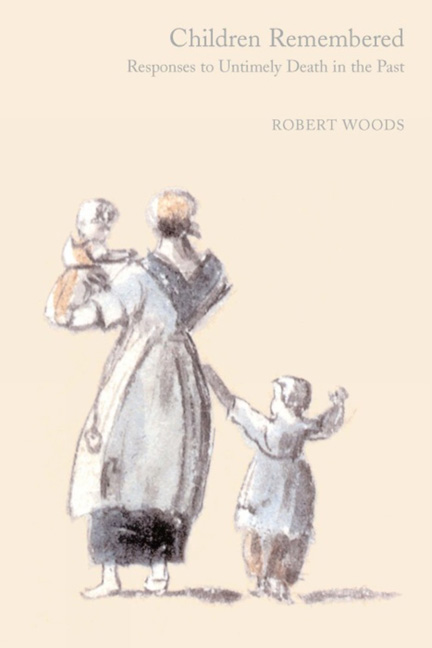Book contents
- Frontmatter
- Dedication
- Contents
- List of Tables
- List of Figures
- List of Illustrations
- 1 Introduction: ‘the lines of life’
- 2 Après la mort des enfants
- 3 Mortality, Childcare and Mourning
- 4 Children in Pictures and Monuments
- 5 Emotions and Literature
- 6 Poems, Mainly of Child Loss
- 7 The Vocabulary of Grief
- 8 Parallel Histories: Experience and Expression
- Acknowledgements
- Notes on the Sixty-Nine Poems
- Notes
- Select Bibliography
- Index
7 - The Vocabulary of Grief
- Frontmatter
- Dedication
- Contents
- List of Tables
- List of Figures
- List of Illustrations
- 1 Introduction: ‘the lines of life’
- 2 Après la mort des enfants
- 3 Mortality, Childcare and Mourning
- 4 Children in Pictures and Monuments
- 5 Emotions and Literature
- 6 Poems, Mainly of Child Loss
- 7 The Vocabulary of Grief
- 8 Parallel Histories: Experience and Expression
- Acknowledgements
- Notes on the Sixty-Nine Poems
- Notes
- Select Bibliography
- Index
Summary
Almost all of the 69 are elegies, ‘mournful poems’ for the dead, and several are also epitaphs, poems inscribed or purporting to be inscribed on tombs. Most are sincere expressions of feelings towards the recently departed; they signify bereavement, although in a few cases sincerity may be questioned and a commercial motive suspected. Usually the subject is a child, but infants, the unborn, and women who are about to or who have recently given birth also have a place. A small number of the subjects are spouses, mourned by their partners. How should we read these elegies?
Literary critics and historians have given elegies and epitaphs considerably more attention in recent years. Their interest has tended to dwell on four particular areas. The first focuses on the purpose ofelegies and poetic epitaphs as literary genre. It covers the various distinctions between mourning as a process; grief as an emotion of intense sorrow; the conflict between reason and emotion, between lamentation and praise; and their use as forms of consolation for the bereaved. The second stems from the recognition that the functions and forms of the genre changed; that these changes might be used to reflect how attitudes to mourning altered, as well as what people believed they should feel and what they actually did feel; that elegies were literary versions of certain specific social and psychological practices. In this they could provide insights on the conventions of consolation not only via their content, but also the way they moved in and out of fashion with poets and patrons. ‘Intentionality’ provides a convenient label for the third area. Are the author's intentions recoverable and if so by what means? For example, did the poet write as an act of selfconsolation, part of ‘mourning work’? The fourth sees elegies and especially epitaphs through their historical rather than literary contexts; how they are anchored to biography, fixed in time and place. Questions of historical significance and meaning are brought to the fore while language is moved to the background.
The discussion in this chapter moves between several of these areas.
- Type
- Chapter
- Information
- Children RememberedResponses to Untimely Death in the Past, pp. 169 - 208Publisher: Liverpool University PressPrint publication year: 2006



